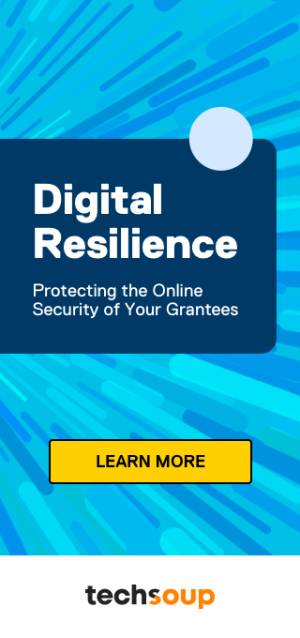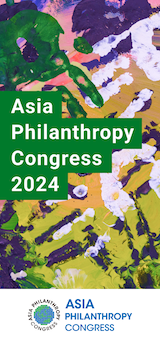We started our PEX 2024 journey surrounded by the multi-coloured murals and graffiti of a suburb in the heart of Rome. The short walk to the venue made clear that despite being primed as the next candidate on the gentrification target list, the area remained firmly anchored to a tradition of counterculture and community resistance. I already liked it.
After sharing espressos and warm introductions, we came to settle ourselves in a circle, with the presenters perched comfortably on a couch pushed against the wall. The communal set-up of the room demonstrated that it was a space to do away with hierarchies that separated teachers and pupils; the ‘dinosaurs’ of the sector and the ‘novices’. In this space, as Alina Shenfeldt and Hanna Stähle assured us, everyone held valuable expertise, whether in philanthropy or beyond.
At the beginning of the first session, Alina and Hanna posed one key question: how do we practice new paradigms in philanthropy?
This question allowed me to settle a little deeper into my seat. It was clear that most people in attendance agreed that traditional philanthropy models are broken – that if we are hoping to create real solutions for today’s interlinked climate, social and political crises, we will have to drive a paradigm shift, one that challenges our assumptions and allows us to collectively re-imagine the way we do our work. But how do we get there?
1. Imagining a different future
The keynote address on day two offered some answers. In a deeply engaging session hosted by Hanna Stähle and Raul Correa-Smith (FORMS – Futures Oriented Museums), participants were introduced to the practice of ‘futures literacy’.
Emerging in the 1970s, future-thinking practices were initially used by companies such as Shell, who, reconciling with the undeniable scarcity of fossil fuels, attempted to ‘predict’ ways of staying relevant and profitable into the future (renewable energy, right? Right?!).
Fifty years on, futures literacy has steadily begun to evolve past a business logic. UNESCO has declared this practice as an “essential capability for the 21st century”, one that “helps people understand why and how we use the future to prepare, plan and interact with the complexity and novelty of our societies”.
Following an insightful interview, Hanna and Raul guided us through an interactive process to ‘reveal our desirable futures’, posing the question:
“If you were to magically wake up 50 years from now and all you could do was ask one question to make sense of that world, what would the question be?”
As the results began to slide onto the main screen, I felt something inside me shift. Among the questions clearly written by sci-fi fans (“Do we use telepathy?”), came a flood of responses demonstrating the rawness and simplicity of shared human experience, including:
“Are you happy?”; “Is there water?”; “Do you feel safe?”; “What do you love about your community?”; “Do we help those who need it most?”; “Will we survive another 50 years?”; “Is my family here?”
What I saw come out of these questions was not the future thinking of a mining company clawing to stay relevant in the eyes of its investors, but the basic desires of humans for a future in which they, others, and the planet, are safe, happy, and supported.
Amongst other thought-provoking questions, this exercise illuminated several key lessons from futures literacy. Namely, through collectively building narratives of what we want the future of philanthropy to look like, we can avoid being whisked away by the sometimes overwhelming complexity of societal and environmental crises.
This not only gives us a sense of hope to drive our actions, but it also breaks down hierarchies of knowledge that can uphold harmful conventions in our work. As highlighted by Hanna: “Foresight is typically connected with expertise, but there is no expertise on the future. We can and should use the future as a playground”.
It is through playing with what we want the future to look like, as equals, that we can better question whether our interpretations of the future are based on our assumptions of the present.
2. Building up alternatives, before burning structures to the ground
Hanna and Raul’s keynote session was deeply thought-provoking. I carried this inspired mindset into the following session – a participant-led discussion, based on ‘being bold’ and ‘tackling racial justice’ hosted by James Macgowan and Sandra Ortiz Diaz.
Feeling maybe a little too emboldened by my circle of abolitionist friends, organisers, and students back in the U.K., I introduced myself with a question: “How do we feel about abolishing philanthropy?”.
People’s reactions were mixed. Indeed, ‘abolition’ is a scary and often misleading word. Participants raised concerns, with some highlighting that efforts to ‘end’ philanthropy would distract resources away from Black and Brown communities, who need the money from philanthropy today.
But, as outlined by Ruth Wilson Gilmore, founder of prison abolitionist organisation Critical Resistance, abolition is “presence not absence”. Abolition requires us to first build alternatives and new structures that support communities, before dismantling harmful and outdated systems. It is through funnelling money and resources into the creation of these new structures, that we render harmful systems obsolete.
So, maybe an immediate ‘end’ to philanthropy is not the solution, per se. But, if we are hoping to create a ‘paradigm shift’ that enables a more effective, equitable and community-driven future for philanthropy, I believe it is worth looking to abolitionist principles and movements as a guide.
Interestingly, after clarifying these principles with those in the chat, and with James expertly summarising our discussion to the broader group, it seemed like many members of the PEX community shared this vision.
For many participants, including myself, this future paradigm for philanthropy looks like the presence of unrestricted, (potentially ‘spend down’) funding into communities most impacted by inequality. This funding would enable communities to invest in their collective well-being, receive direct and full returns on these investments, and build new, sustainable economic and social systems of regeneration and resilience.
From here, communities would no longer need to rely on the concentrated (white) wealth and power of the few. This would ultimately allow for the absence of a philanthropic system that remains fixated on maximising investment returns and the endless accumulation of capital, two goals that, in many cases, continue to perpetuate inequality, exploitation, and extraction.
So, when I close my eyes and imagine, I see a future in which philanthropy belongs to people and communities, not investors, not foundations and certainly not billionaires. It seems to me that a large majority of the PEX community shared this view.
The PEX Forum offered a deeply creative and welcoming space to inquire, challenge one another, organise around our fears, and discuss strategies based on our hopes. PEX allowed us to co-create and re-imagine a brighter future for philanthropy. Now it’s just about getting there.
Kit Muirhead is the Partnerships Manager at Alliance Magazine.





Comments (0)